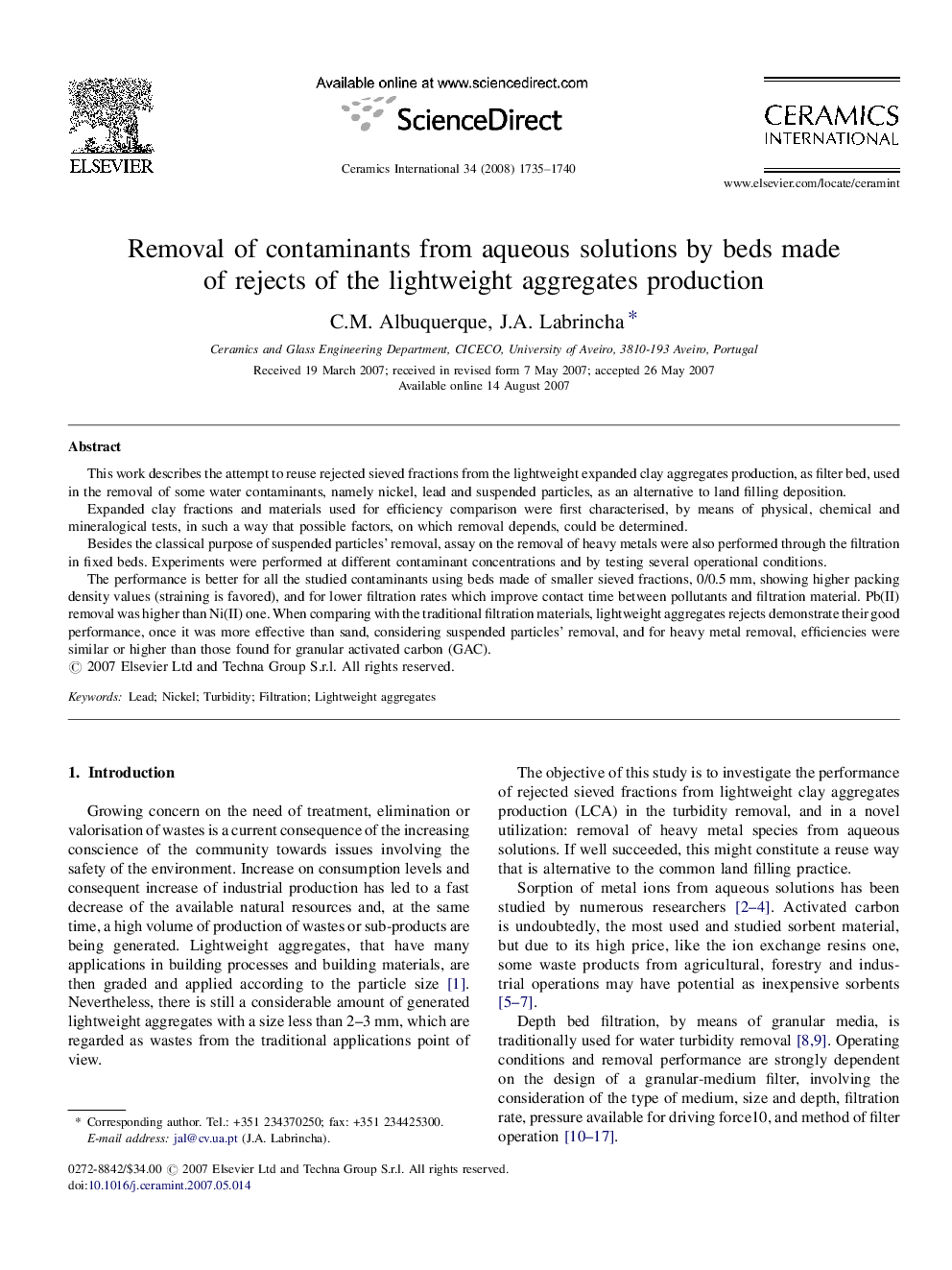| Article ID | Journal | Published Year | Pages | File Type |
|---|---|---|---|---|
| 1464902 | Ceramics International | 2008 | 6 Pages |
This work describes the attempt to reuse rejected sieved fractions from the lightweight expanded clay aggregates production, as filter bed, used in the removal of some water contaminants, namely nickel, lead and suspended particles, as an alternative to land filling deposition.Expanded clay fractions and materials used for efficiency comparison were first characterised, by means of physical, chemical and mineralogical tests, in such a way that possible factors, on which removal depends, could be determined.Besides the classical purpose of suspended particles’ removal, assay on the removal of heavy metals were also performed through the filtration in fixed beds. Experiments were performed at different contaminant concentrations and by testing several operational conditions.The performance is better for all the studied contaminants using beds made of smaller sieved fractions, 0/0.5 mm, showing higher packing density values (straining is favored), and for lower filtration rates which improve contact time between pollutants and filtration material. Pb(II) removal was higher than Ni(II) one. When comparing with the traditional filtration materials, lightweight aggregates rejects demonstrate their good performance, once it was more effective than sand, considering suspended particles’ removal, and for heavy metal removal, efficiencies were similar or higher than those found for granular activated carbon (GAC).
